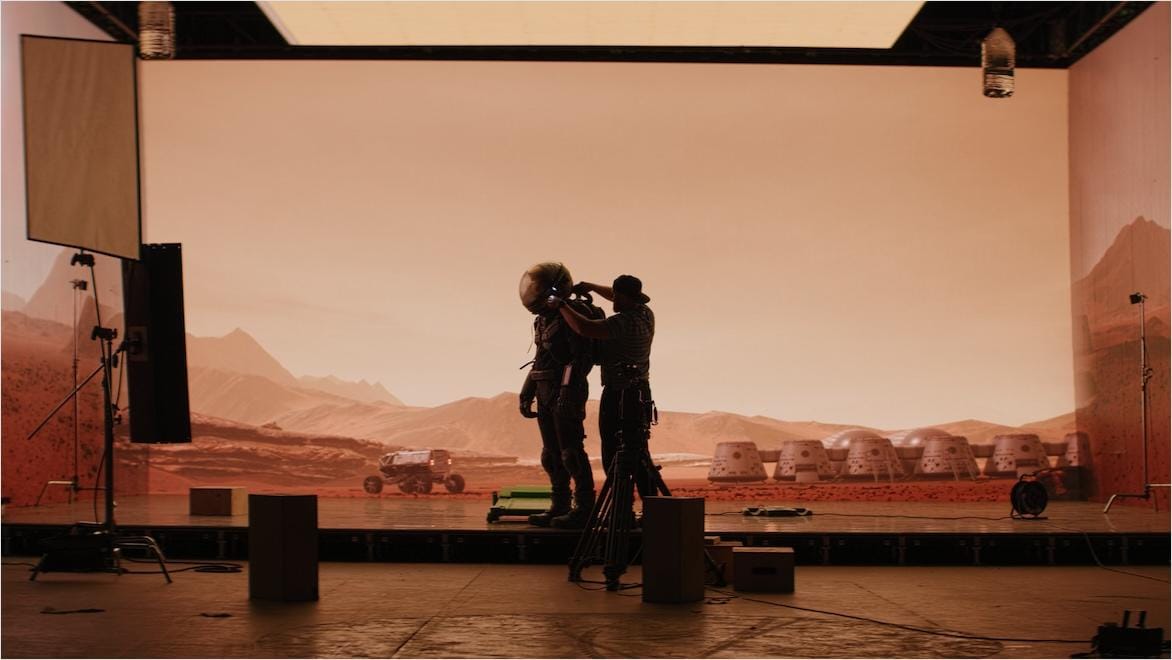& Construction

Integrated BIM tools, including Revit, AutoCAD, and Civil 3D
& Manufacturing

Professional CAD/CAM tools built on Inventor and AutoCAD
Television production software encompasses a range of digital tools and applications that facilitate every stage of TV content creation.
Television production involves a multi-stage process starting with conceptualization and pitching ideas, followed by preproduction tasks like scriptwriting, casting, and budgeting. The preparation and planning phase of TV production encompasses location scouting, costume and set design, and technical planning.
During the production phase, filming occurs under the direction of the filmmaker. Postproduction involves video and sound editing, color grading, and the addition of visual effects or animation. The finalized content undergoes quality control before distribution through various channels, such as streaming services and TV networks.
Postproduction software is used in television production to refine raw video footage and create a polished final product. Video editing tools are used for more precise arrangement of footage for storytelling and pacing, and audio editing enhances dialog clarity and adds sound effects or music for an immersive experience. Color grading adjusts visual aesthetics for consistency and mood. Visual effects and animation tools add realistic CG characters, environments, and effects to live-action footage. Transcoding and compression optimize content for different platforms. Quality control ensures a polished, error-free result, and collaboration tools aid efficient teamwork.
A variety of TV production software is used to create visual effects and animation for television. 3D modeling and simulation tools are used to create realistic CG elements and effects that are then integrated with live-action footage through tasks like compositing. Animation tools help bring CG characters to life using keyframing, character rigging, and motion capture. Rendering capabilities allow for adjustments in lighting and shading in scenes. Collaborative tools for TV production also ensure smooth communication and interoperability among all stages of the production pipeline.
There are many types of television shows—crime dramas, documentaries, panel shows, sitcoms, and more. These can broadly be divided into two TV production types:
Some TV shows are filmed in a live on-set studio and broadcast simultaneously to the audience’s television sets. These include sitcoms and news broadcasts. Some live studio television productions have an audience present during transmission.
Other TV productions are recorded first and broadcast later. This applies to all narrative-based TV and also to some nonfiction television productions.
Most television productions involve dozens if not hundreds of people, each with a different part to play. Some key roles include:
The producer oversees the production and is responsible for elements such as obtaining funding, hiring crews, overseeing the production itself, and organizing the production schedule. For this they may use TV production scheduling software.
The writer is responsible for creating a script of what will happen in the show, from scene and action descriptions to dialogue spoken by characters.
It’s the role of the director of a TV production to manage the creative and technical processes of the show—so they are ultimately responsible for how it looks and sounds.
The director of photography (DP) is responsible for overseeing the look of the TV production, including camera angles and lighting.
From scriptwriting to distribution, TV production software empowers teams and elevates every aspect of a production workflow. Key benefits include:
TV production management software helps streamline the production process by automating tasks; managing timelines, scheduling, and workflows; and improving overall efficiency. This leads to faster project completion and better use of resources.
Production management software for film and television provides platforms for effective collaboration and communication among team members across continents and time zones. Features like real-time updates, file sharing, and collaborative editing contribute to a smoother production workflow.
TV production involves a large volume of media assets, including video footage, audio files, graphics, and more. TV production management software helps organize and manage these assets, making it easier for teams to access and use the necessary materials.
Budgeting features within production management software help producers track expenses, allocate resources efficiently, and control costs. This is crucial to stay within budget constraints and ensure the financial success of a production.
Dedicated TV production software for scriptwriting and storyboarding gives writers and directors tools to develop and visualize their ideas. These tools often include formatting assistance, version tracking, and collaboration features.
TV postproduction software enhances the quality of the final product through powerful animation, visual effects, and video editing tools. VFX artists can add stunning effects to live-action scenes, and editors can cut, trim, and improve visual and auditory elements to create a polished and engaging final product.
No matter how exciting or glamorous the end result of a TV production appears, there’s a good chance it was powered by hundreds of files. Many files must be produced and shared, from call sheets that specify times for crew and talent to be on set to storyboards that visualize how each scene and shot will look before it’s filmed. Television production software such as Flow Production Tracking can manage all production files in one place. And because it’s cloud-based, sharing and collaborating is easy.
UNTOLD STUDIOS
A cloud-based creative studio uses Autodesk’s Design and Make Platform for TV production to scale with the future in mind.
Image courtesy of Untold Studios
GHOST VFX
An Emmy-winning visual effects studio uses Maya TV production software to bring a gigantic Netflix protagonist to life.
Image courtesy of Netflix
LOCUS ANIMATION
A leading Korean 3D animation studio uses Maya to produce engaging animated TV series and films within a flexible, customizable pipeline.
Image courtesy of LOCUS Animation
Because TV production often requires the combined work of hundreds of people, being able to collaborate easily and effectively using television production software is essential. Autodesk’s production management software for film and television, such as Flow Production Tracking, features a variety of collaborative tools. For example, teams in multiple locations can view footage and provide feedback. TV management software also includes workflows for Maya, 3ds Max, and Unreal Engine.
See how Amazon Studios pushed the boundaries of episodic storytelling with Flow Production Tracking (formerly ShotGrid) and Flow Capture (formerly Moxion) television production software.
Learn how Animal Logic enhanced streamlining of its pipeline and completed complex productions with Flow Production Tracking.
See how Image Engine used a custom Flow Production Tracking pipeline to deliver VFX for Venom: Let There Be Carnage.
The TV production process comprises several stages, beginning with conceptualizing and pitching ideas during development. Preproduction includes scriptwriting, casting, and detailed planning, including location scouting and technical considerations. The production phase, or principal photography, is the actual filming guided by the director’s vision. Postproduction follows, incorporating video and sound editing, color grading, and the addition of visual effects and animations, all subject to quality control. The distribution stage of television production involves formatting content for various channels, while marketing and promotion activities precede broadcasting or streaming. The post-release phase includes audience feedback analysis, influencing decisions on the show’s future.
TV production software is a versatile toolset for creating and enhancing television content. It’s used for scriptwriting, storyboarding, and preproduction planning, streamlining tasks such as casting and location management. TV production management software promotes team collaboration and communication, efficiently coordinating workflows and tasks. Asset-management capabilities enable studios to organize and provide easy access to video footage, audio files, and graphics. Visual effects, animation, and editing TV production software bring everything together, combining live-action footage with CG elements to create visually compelling content, while audio editing and sound design ensure high-quality sound.
TV production, as overseen by a TV producer, covers many aspects of the production process, including hiring and firing cast and crew, marketing, budgeting, and fundraising. Without the many steps of television production, there would be no content to watch on traditional network broadcasters or digital streamers.








